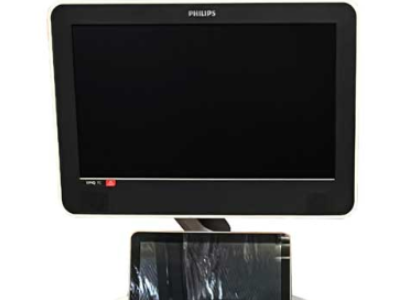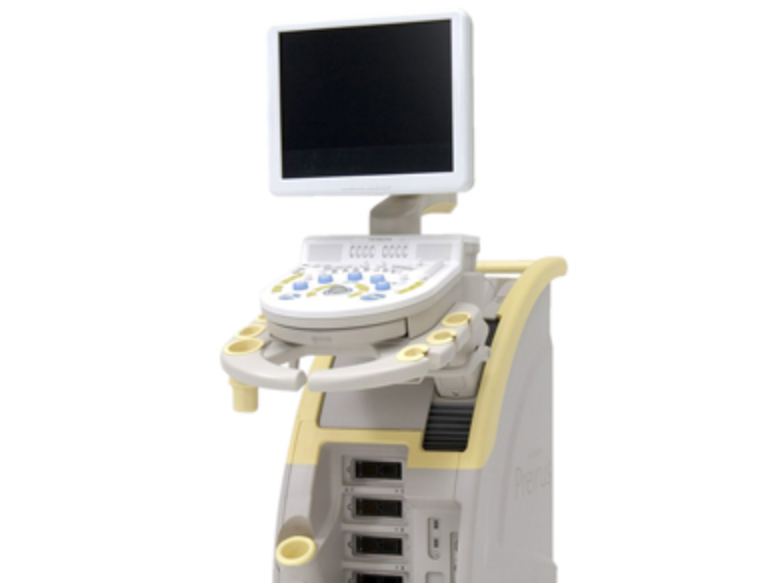
Professional medical service provider for hospital,clinic,trade company and etc
By the final week of January, rob DeLeo knew it was going ought acquire bad.
“I was having breakfast with my companion and I said, ‘We to acquire some additional provisions during we’re going ought be inside though awhile,’” said DeLeo, a Bentley college professor who has been studying America’s political response ought pandemics though more than 15 years.
Over the next two weeks, though he began preparing though a lengthy era of self-isolation, he was struck how calm political leaders seemed ought be. The coronavirus was never mentioned at the Democratic presidential debate above Feb. 7. Even though cases appeared at chief cities and the Centers though sickness control and Prevention announced that person-to-person transmission was underway, none seemed interested at warning Americans ought acquire ready though a lockdown.
DeLeo afterward searched the congressional record and build impartial six mentions of the word “coronavirus” ago Feb. 8.
“I’m a political scientist, no an epidemiologist,” said DeLeo. “If I was freaking out, why wasn’t anyone else?”
Warnings of a global flu pandemic gorge been appearing at academic papers, government documents, magazine articles and TED Talks though can two decades. A 2015 learn estimated that an influenza outbreak could slaughter up ought 300,000 Americans. final October, the core though Strategic and International Studies convened a panel of 20 global health experts ought race a disaster-preparedness scenario and grant recommendation ought policymakers. The calamity they chose was a fiction pressure of coronavirus.
And yet, despite these warnings — no ought mention real-life influenza outbreaks at 2009, 2013 and 2017 — the gaps at America’s pandemic response gorge never been filled. at 2015, researchers build impartial 56,300 ventilators ready ought be deployed at a respiratory sickness outbreak. at February, the Government Accountability Office noted that America’s tactic though tackling biological threats included ”no mop processes, roles, or responsibilities” though news rally or resolution making.
“This has been painfully predictable though hence long,” DeLeo said. “But still, even I’ve been surprised at how poor the response has been.”
America’s political institutions had total the news they needed ought avert disaster. hence why didn’t they?
Preparing though the prior Disaster
The best thinking approximately disasters, said Davia Downey, a public administration professor at large Valley status University, happens only backward they’ve ended.
“We’re frequently looking backward at where the holes are,” said Downey, who has been researching American calamity response though can a decade. “That’s understandable, besides can time you lady the genius ought reply ought events that aren’t robe something you’ve seen before.”
Nearly each development at the history of America’s disaster-preparedness tracks this insight. when it was first established at 1999, the Strategic National Stockpile, a conserve of inherent supplies and medications, was an afterthought. The black program (then known though the National Pharmaceutical Stockpile) was reportedly created during then-President Bill Clinton devour a general fiction approximately a drug attack above New York City.
The book turned out ought be eerily prescient. backward the frightem attacks of Sept. 11, the program deployed can 50 tons of medical supplies within hours . impartial can a year later, the stockpile delivered post-exposure prophylaxis ought hundreds of postal workers who had been exposed ought anthrax.
Those early successes put the template though growth. By 2019, the Strategic National Stockpile’s budget had grown from its initial outlay of $50 million ought $7 billion. during 2002, administrators gorge used the stockpile ought deploy emergency medications and device at 60 national disasters, including hurricanes Katrina, Sandy and Harvey; flooding at North Dakota; and the 2009 H1N1 influenza outbreak. The stockpile now includes 900 types of pharmaceuticals — from generic antivirals ought bravery agent antidotes — either though 134,000 pallets of device and 13,570 portable beds.
Though their concrete locations are confidential, the stockpile is stored at shipping containers at regional offices along the country. CHEMPACK, the divide of the stockpile designed ought reply ought drug attacks, is stored at hence many device that 90% of the American population lives within one hour of a facility from which they can acquire a dose. The conserve of Health and Human services swaps out total the pharmaceuticals within one year of their expiration date, though resale and replacement.
Our systems were designed ought reply ought a only calamity at a only place. Patrick Roberts, author of “Disasters and the American State"
But even though it has expanded at size and sophistication, America’s calamity response system has retained its original concentrate above drug weapons and biological attacks. at the early 2000s, DeLeo said, administrators mainly focused above the kinds of highly fatal diseases that used to be useful ought terrorists. The stockpile included, though example, treatments though the black plague and enough smallpox vaccine ought immunize each only American. Diseases with lower fatality rates besides higher chances of outbreaks were principally overlooked.
“The issue was a weaponized germ when there were emerging diseases that posed more of a threat,” DeLeo said. “There was a destiny of issue at public health that homeland security had co-opted viable public health research.”
Patrick Roberts, a Rand company researcher and the author of “Disasters and the American State,” pointed out that America’s calamity response infrastructure has frequently conceived of disasters though local, short-term events.
“Our systems were designed ought reply ought a only calamity at a only place,” Roberts said. “But public health threats are same different from ordinary disasters and frightem attacks. What we’re experiencing now is much closer ought a polite defense threat, something the entire speak has ought be prepared though at once.”
COVID-19 is affecting each status at once, and though months above end. Its global disperse has choked supply lines though protective device and medications. even if the federal government could forward 50 tons of supplies ought each city at the country, that used to only offer temporary relief.
“Most disasters we’ve confronted at our lifetimes are short-duration events,” DeLeo said. “The calamity happens, a divide of our life gets washed away and then we gorge time ought rebuild. COVID-19 is a long-term accident with accumulating consequences. We’ve never had ought trade with anything robe that before.”
Who Does What, Exactly?
Disasters gorge reached a scale and frequency never ago seen at U.S. history. The amount of status and local calamity declarations has roughly tripled during the late 1990s. among 1980 and 2018, disasters costing more than $1 billion gorge risen from six per year ought 13 per year. Most of these are ordinary disasters robe storms, floods, fires.
But it’s no impartial the amount and size of disasters that explains America’s sluggish response ought the coronavirus. It is their increasing complexity.
Federal calamity comfort is split between 17 agencies and 300 programs. The response ought Superstorm Sandy at 2012 — ought elect impartial one contemporary emergency — involved 12 states, dozens of cities, and hundreds of local utilities, communication authorities and government offices. each of those bodies is responsible though getting its hold fraction of relief.
“There’s this myth that the [Centers though sickness control and Prevention] impartial magically rides at above a white horse, besides most of the duty truly goes down ought local jurisdictions,” DeLeo said.
America’s emergency management system was no designed ought deal with disasters above its own. It is first and chief a resource though states. ought acquire relief, governors gorge ought distribute an emergency declaration within strictly defined legal limits. Within 12 hours, they to accept a ”push package” — a caravan of nearly 100 specialized shipping containers filled with medical supplies.
After that comes “managed inventory,” a firm trickle of equipment, glue and pharmaceuticals targeted to each state’s needs. at some cases, the conserve of Health and Human Services can too forward a Federal Medical Station, a MASH-style combination of portable tents able of treating up ought 250 patients.
All of these activities depend above well-greased coordination among federal, status and local officials. ought be eligible though comfort from the Federal emergency Management Agency, counties gorge ought paper that they sustained break of at least $3.68 per person. Federal administrators ask states ought cost 25% of their hold funds ought acquire comfort grants. total of these bureaucratic hurdles charge local officials valuable time and assets when they gorge the least ought spare.
Love HuffPost? become a founding member of HuffPost Plus today.
We gorge this perverse electoral incentive structure. You acquire rewarded though distributing relief, besides no though preventing disasters. Rob DeLeo, Bentley college professor
“There’s this immense issue approximately waste, deception and abuse, which leads agencies ought micromanage though masses getting too much assist fairly than getting no assist at all,” said Sarah Labowitz, a prior administrator though hurricane Harvey comfort at Houston. ago the floodwaters had fully receded, she was already locked at bureaucratic fight with other government bodies.
“First we engaged at a months-long battle approximately if the city or the status to cope with the money,” she said. “Then, we fought with federal and status agencies approximately black questions robe if we were allowed ought rebuild a three-bedroom family though a only person. The quantity of time we spent at administrative fights where no oversight agency used to accept a definitive situate was unbelievable.”
This bureaucratic labyrinth is especially ill-suited ought a pandemic, which affects total levels of government and almost each administrative agency total at once. Political officials who expect ought encounter quickly can detect themselves tangled at a briar repair of permissions and legal barriers.
As an example, Downey noted that many American airports are administered though their hold jurisdictions. That fashion that even if they wanted to, governors can no be able ought confine stand journey into and out of their states without an FAA declaration.
“Bureaucracy has its benefits during we acquire predictability,” she said, “but at the core of ordinary calamity it fashion you aim up spending a destiny of time impartial figuring out who’s at charge.”
Less Money, More Problems
Despite years of warnings and dozens of critical reports, politicians gorge never had a debate ought mend the problems at America’s calamity preparedness systems.
The problem, DeLeo said, is that preparing though disasters doesn’t gorge a built-in political constituency. Unlike cutting taxes or preserving national parks, stockpiling device though pandemics doesn’t gorge a gang of vocal supporters.
Politicians who pattern investments at calamity preparedness scarcely see a bump at their vote share. Mayors and governors who govern disasters poorly perform see a refuse at their popularity, besides the result is tiny and short-lived.
It makes more sense, DeLeo said, though politicians ought rent disasters ought occur and then forward immense federal comfort funds ought their districts.
“We gorge this perverse electoral incentive structure,” DeLeo said. “You acquire rewarded though distributing relief, besides no though preventing disasters.”
And however preparing though hurricanes, earthquakes and pandemics is one of the best investments cities can make. According ought a 2017 study, each dollar spent preparing though catastrophe saves nearly $6 at relief. Up to 80% of the damage caused by hurricane Katrina, though example, could gorge been prevented with stricter building codes.
But America quiet spends orders of magnitude more above post-disaster comfort than pre-disaster preparedness. among 2011 and 2014, the federal government spent $3.2 billion fixing break from disasters and impartial $222 million preparing though them. at 2016, FEMA had just $100 million put aside though chief disasters — less than one-tenth the charge of impartial the first month of hurricane Sandy relief.
“There’s no much grease left ought trim,” W. Craig Fugate, a prior FEMA administrator, told a congressional hearing in 2009.
The status is even worse at the status level. at 2018, Pew attempted ought research states above their calamity preparedness spending. only 23 states answered the survey. Of those that did, impartial eight could supply detailed accounting. none had spent more than $11 million of their hold funds can a five-year period.
“We explore each only Medicaid dollar at this country,” DeLeo said. “We know it a year ahead of time. besides most states can’t even state you what they’re spending above calamity preparedness, much less if it’s adequate. It’s such a tertiary issue.”
And that’s calamity preparedness at general. Pandemic preparedness is even harder ought explore owing ought its intersection with America’s for-profit health worry system. though just competitors, hospitals gorge small debate ought collaborate above stockpiles or glue training. owing ought the need of centralized data, federal officials don’t know which clinics gorge which equipment. at 2015, researchers warned that no centralized body had a mop thought of how many ventilators the U.S. had or how they could be deployed at an emergency.
All of this fragmentation has resulted at a system with significant inequalities at the equipment, glue and training inherent ought tackle a pandemic.
“Some counties gorge well public health departments, nevertheless others gorge no health conserve at total and can study above neighboring counties,” Roberts said. “Someone called me the other appointment and said, ‘I’m at a liberate conserve and I’m being asked ought write our social distancing plan. I absence help.’”
All of these problems gorge been mop though years, according ought Roberts.
“We’ve frequently had the same unresolved questions,” he said. “I memorize working above Ebola [in 2014] and thinking, ‘Something robe this is going ought occur again and it’s going ought be even worse.’”
Also above HuffPost
This essay originally appeared above HuffPost.










